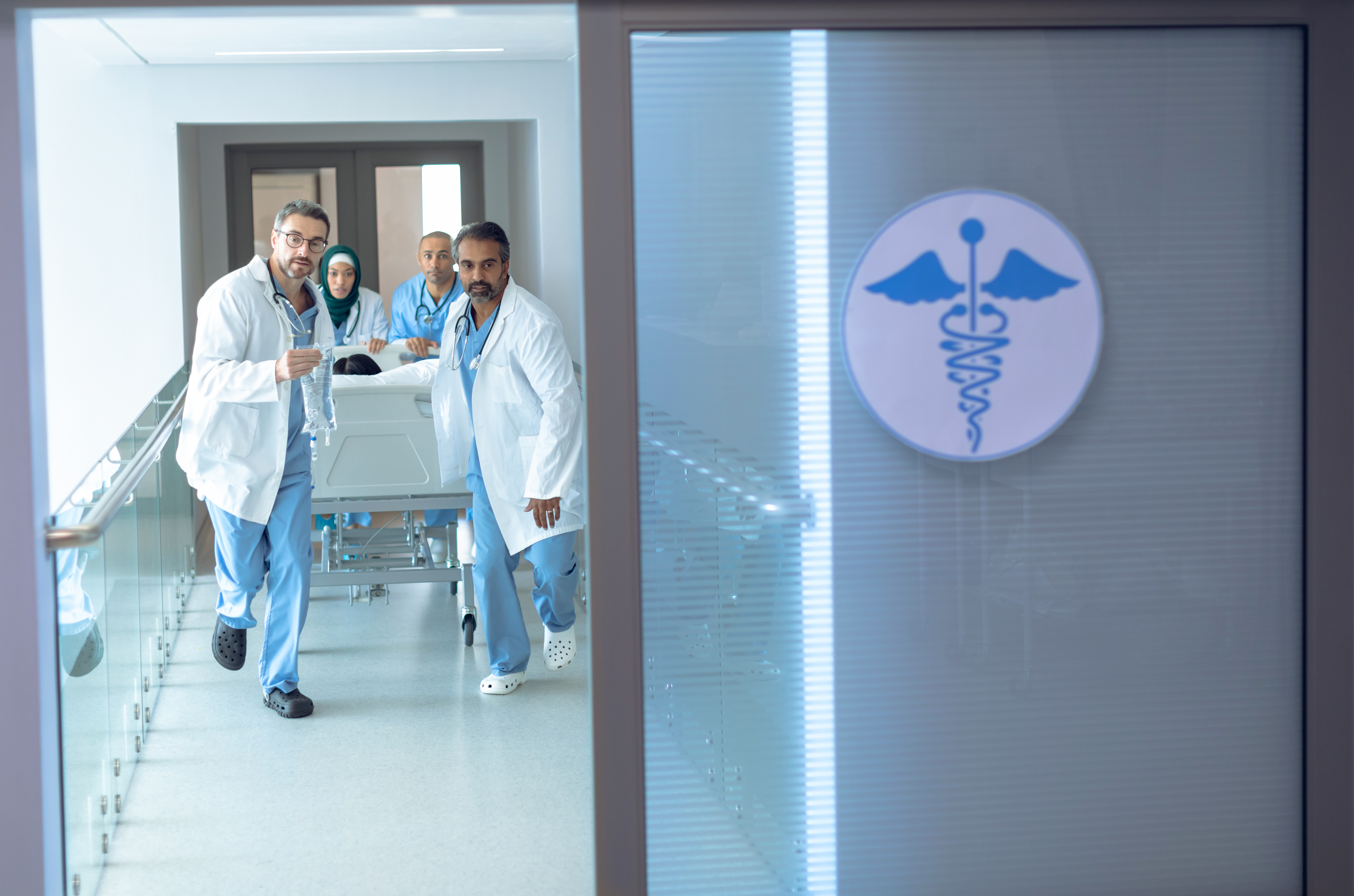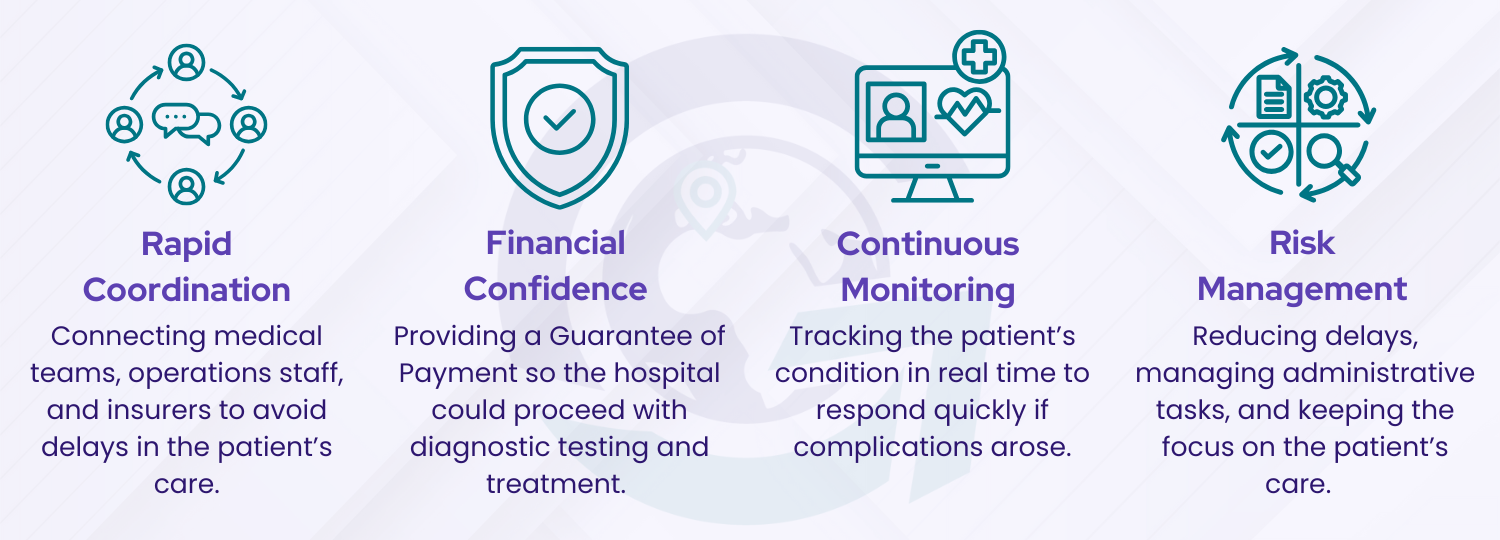A medical emergency is unpredictable, but being prepared to manage it effectively can make a difference. We understand the complexities of these situations and are prepared to step in with a coordinated response. Discover how our team collaborated with medical professionals and insurers to help a patient in critical condition receive the necessary care.

A health condition or situation that requires immediate medical attention is considered a medical emergency. Some examples are: cardiac events, seizures, large wounds, and trauma incidents. If professional care is not provided fast, patients are at risk of permanent damage or even death. So, the first step to manage an emergency is to contact the local emergency service number.

The challenges of a medical emergency do not end when a patient arrives at the hospital. As doctors focus on saving lives, critical work involving patient advocacy, stakeholder communication, coverage verification, and financial approvals begins. This is where a risk management partner steps in, to handle the operational side and prevent disruptions to recovery.

We were informed by a hospital in Israel about a patient who had been admitted after suddenly losing consciousness. The medical staff highlighted the case as high-risk because of the patient’s history of a heart attack, diabetes, and a pacemaker. They suspected a possible epileptic seizure and needed to run several diagnostic tests urgently. However, to proceed with the tests, the hospital had to confirm treatment coverage first. Our team understood the urgency of the situation and stepped in to avoid treatment delays.

Our Medical Operations team led the coordination efforts during this medical emergency. They worked closely with the hospital, our Operations team, and the patient’s insurer. Our goal was clear: to verify coverage of treatment costs under the insurance policy and avoid delays in care. In the meantime, we continued to monitor the patient’s condition, ready to respond if complications arose. Once coverage was confirmed, we issued a Guarantee of Payment (GoP), which allowed the hospital to proceed with the diagnostic tests. Our fast, collaborative approach allowed the medical team to provide essential care without administrative delays.

With financial security and diagnostic testing in progress, the medical emergency progressed without disruptions. Doctors evaluated the patient with the test results and proceeded with treatment. Our rapid medical assistance coordination efforts meant the patient experienced no further complications. Once stable and no longer at risk, the hospital discharged the patient and cleared them to return home. Throughout this process, we continued to communicate with all stakeholders, ensuring continuity of care and a smooth transition from hospital to home.

In a medical emergency, rapid coordination and clear communication can save lives. Our expert team manages the logistics, ensuring that treatment continues without delay and patient care remains the top priority.
Let’s discuss how to manage critical situations with confidence.